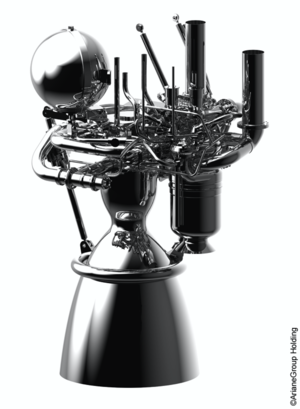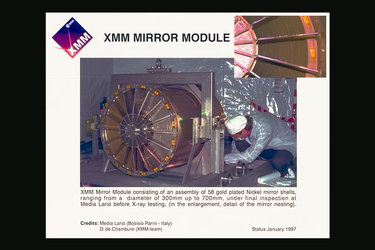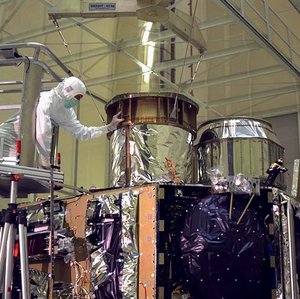Accept all cookies Accept only essential cookies See our Cookie Notice

About ESA
The European Space Agency (ESA) is Europe’s gateway to space. Its mission is to shape the development of Europe’s space capability and ensure that investment in space continues to deliver benefits to the citizens of Europe and the world.
Highlights
ESA - United space in Europe
This is ESA ESA facts Member States & Cooperating States Funding Director General Top management For Member State Delegations European vision European Space Policy ESA & EU Space Councils Responsibility & Sustainability Annual Report Calendar of meetings Corporate newsEstablishments & sites
ESA Headquarters ESA ESTEC ESA ESOC ESA ESRIN ESA EAC ESA ESAC Europe's Spaceport ESA ESEC ESA ECSAT Brussels Office Washington OfficeWorking with ESA
Business with ESA ESA Commercialisation Gateway Law at ESA Careers Cyber resilience at ESA IT at ESA Newsroom Partnerships Merchandising Licence Education Open Space Innovation Platform Integrity and Reporting Administrative Tribunal Health and SafetyMore about ESA
History ESA Historical Archives Exhibitions Publications Art & Culture ESA Merchandise Kids Diversity ESA Brand Centre ESA ChampionsLatest
Space in Member States
Find out more about space activities in our 23 Member States, and understand how ESA works together with their national agencies, institutions and organisations.
Science & Exploration
Exploring our Solar System and unlocking the secrets of the Universe
Go to topicAstronauts
Missions
Juice Euclid Webb Solar Orbiter BepiColombo Gaia ExoMars Cheops Exoplanet missions More missionsActivities
International Space Station Orion service module Gateway Concordia Caves & Pangaea BenefitsLatest
Space Safety
Protecting life and infrastructure on Earth and in orbit
Go to topicAsteroids
Asteroids and Planetary Defence Asteroid danger explained Flyeye telescope: asteroid detection Hera mission: asteroid deflection Near-Earth Object Coordination CentreSpace junk
About space debris Space debris by the numbers Space Environment Report In space refuelling, refurbishing and removingSafety from space
Clean Space ecodesign Zero Debris Technologies Space for Earth Supporting Sustainable DevelopmentLatest
Applications
Using space to benefit citizens and meet future challenges on Earth
Go to topicObserving the Earth
Observing the Earth Future EO Copernicus Meteorology Space for our climate Satellite missionsCommercialisation
ESA Commercialisation Gateway Open Space Innovation Platform Business Incubation ESA Space SolutionsLatest
Enabling & Support
Making space accessible and developing the technologies for the future
Go to topicBuilding missions
Space Engineering and Technology Test centre Laboratories Concurrent Design Facility Preparing for the future Shaping the Future Discovery and Preparation Advanced Concepts TeamSpace transportation
Space Transportation Ariane Vega Space Rider Future space transportation Boost! Europe's Spaceport Launches from Europe's Spaceport from 2012Latest

FIRST prototype mirror
Thank you for liking
You have already liked this page, you can only like it once!
ESA's Far Infra-Red and Submillimetre Telescope (FIRST) Cornerstone mission will be launched in 2007 to undertake observations in one of the least explored windows on the Universe. FIRST will observe the births of stars and galaxies throughout the history of the Universe. By detecting the far-infrared and submillimetre emission radiated by gas and dust heated by young stars, it will help astronomers to understand the physics of how stars form and will enable the detection of galaxies forming in the very early Universe. FIRST's main mirror is a technological challenge. With a diameter of 3.5m, it will be the largest mirror ever sent into space, and it has to be extremely smooth, light and resistant. The technology for building it is still under study in the USA and Europe; ESA is waiting for the results to come in from the construction of two prototypes, each based on different materials and techniques. Tests were performed in May 1999 on the European prototype (pictured here). This is a 1.35m reflector made by Matra Marconi Space from silicon carbide (SiC), a ceramic material still rather new in space applications but already in use in industry. SiC seems to have all the advantages of metal and glass, such as lightness and high resistance to stress and changes in temperature, and can be polished and smoothed as if it were glass. To make sure these properties meet the requirements of a mirror for FIRST, the prototype had to pass a temperature-shape test at the Liege Space Centre (CSL) in Belgium. The surface was cooled from room temperature to about minus 160degC. Afterwards, laser measurements accurate to half a micron showed there to be no surface distortions. The vibration test shown here, in ESTEC's Test Centre, showed the mirror could withstand the forces of an Ariane-5 launch. FIRST will be launched in tandem with the Planck mission aboard an Ariane-5. Further information is available at http [Image Date: 1999/05] [99.05.005-007]
-
CREDIT
ESA -
LICENCE
ESA Standard Licence














 Germany
Germany
 Austria
Austria
 Belgium
Belgium
 Denmark
Denmark
 Spain
Spain
 Estonia
Estonia
 Finland
Finland
 France
France
 Greece
Greece
 Hungary
Hungary
 Ireland
Ireland
 Italy
Italy
 Luxembourg
Luxembourg
 Norway
Norway
 The Netherlands
The Netherlands
 Poland
Poland
 Portugal
Portugal
 Czechia
Czechia
 Romania
Romania
 United Kingdom
United Kingdom
 Slovenia
Slovenia
 Sweden
Sweden
 Switzerland
Switzerland






























